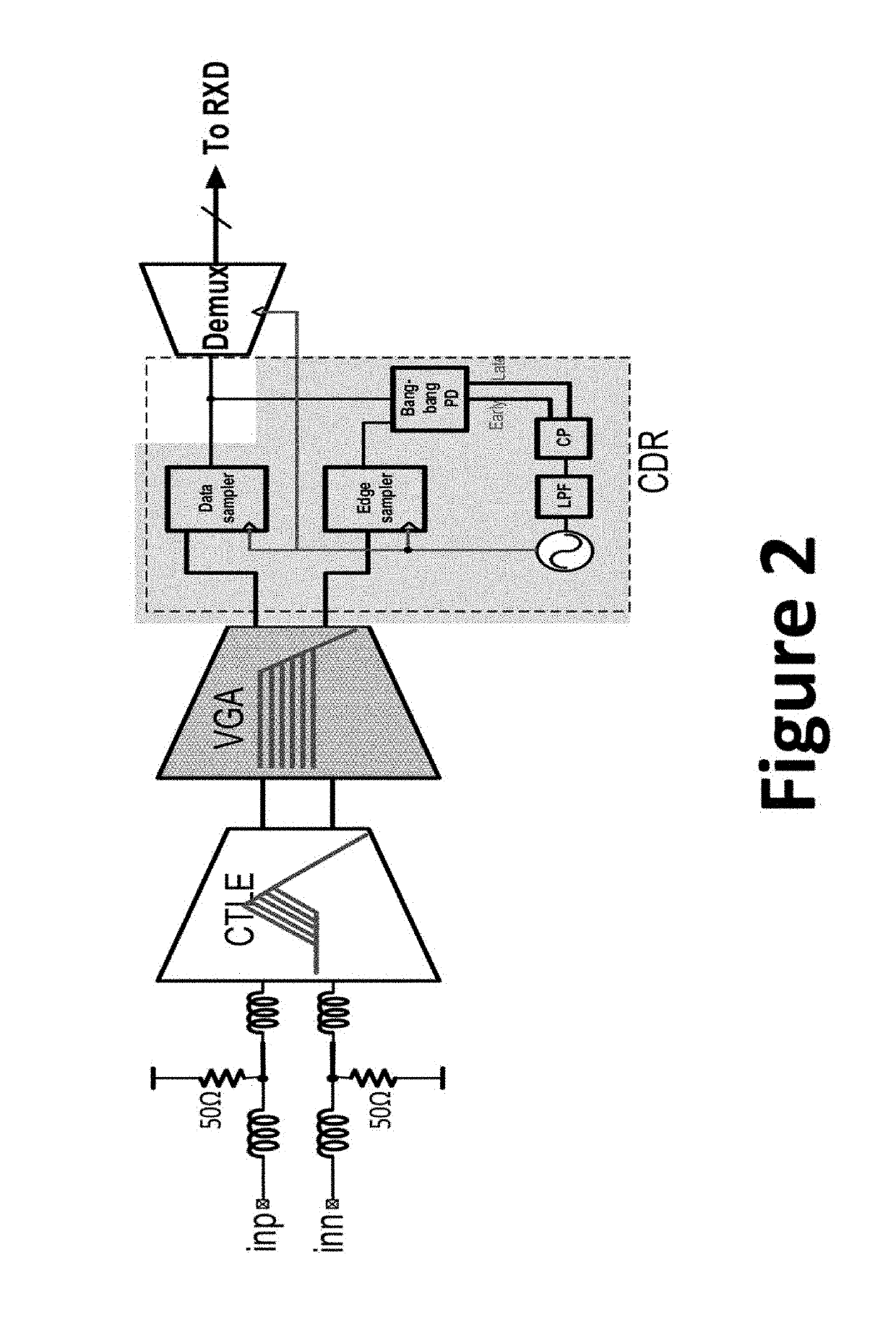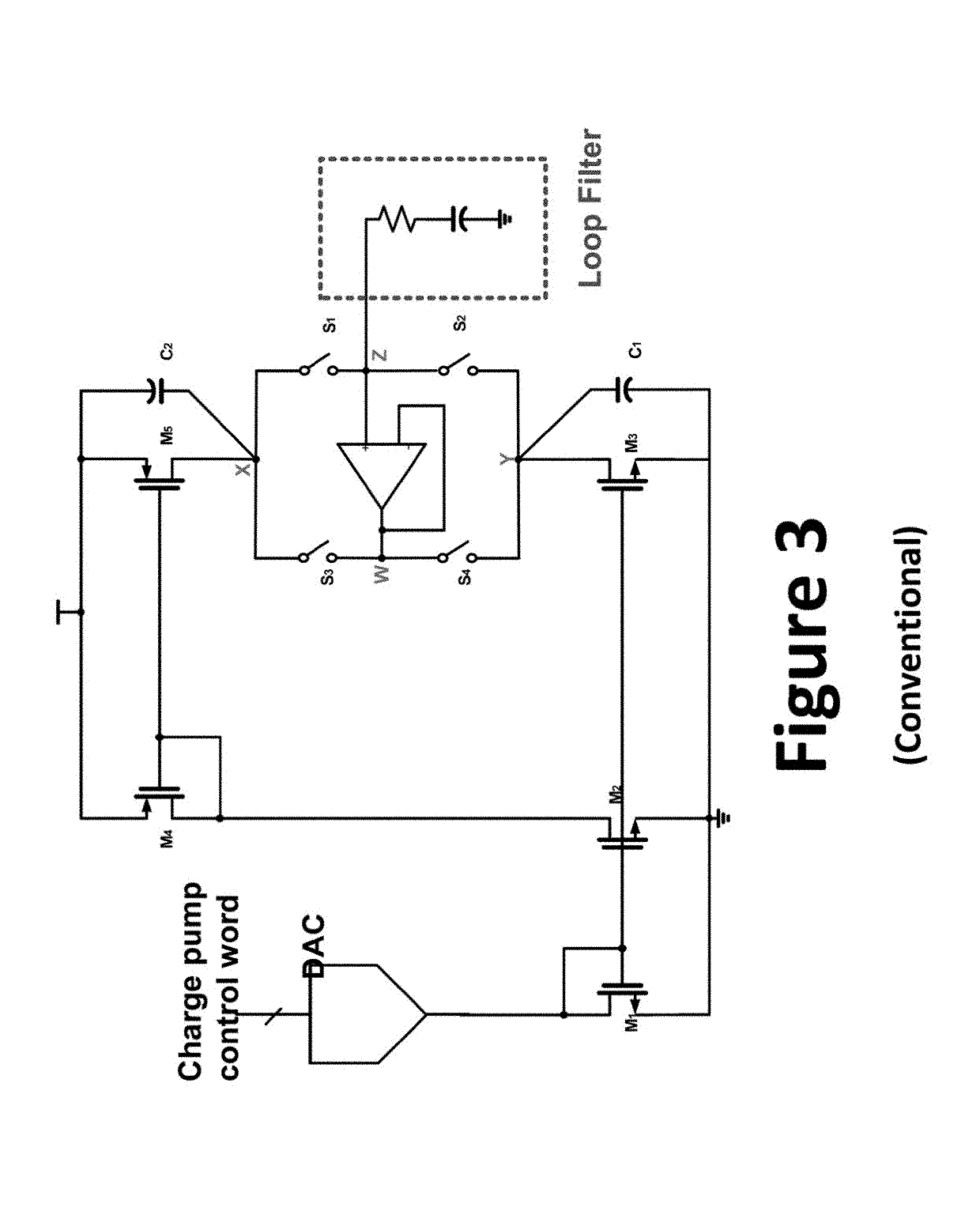Charge pump circuits for clock and data recovery
- Summary
- Abstract
- Description
- Claims
- Application Information
AI Technical Summary
Benefits of technology
Problems solved by technology
Method used
Image
Examples
Embodiment Construction
[0022]The present invention is directed to electrical circuits. More specifically, embodiments of the present invention provide a charge pump, which can be utilized as a part of a clock data recovery device. Early and late signals are used as differential input control signals in the charge pump. A first switch and a second switch are used for controlling the direction of the charge pump current. The output voltage of the first switch and the second switch is used in conjunction with a resistor to generate a charge pump current. There are other embodiments as well.
[0023]FIG. 1 is a simplified block diagram illustrating a communication system according to embodiments of the present invention. This diagram is merely an example, which should not unduly limit the scope of the claims. One of ordinary skill in the art would recognize many variations, alternatives, and modifications. In FIG. 1, the transmitter (TX) transits data signal, as a differential signal, to the receiver (RX) via a ...
PUM
 Login to View More
Login to View More Abstract
Description
Claims
Application Information
 Login to View More
Login to View More - R&D
- Intellectual Property
- Life Sciences
- Materials
- Tech Scout
- Unparalleled Data Quality
- Higher Quality Content
- 60% Fewer Hallucinations
Browse by: Latest US Patents, China's latest patents, Technical Efficacy Thesaurus, Application Domain, Technology Topic, Popular Technical Reports.
© 2025 PatSnap. All rights reserved.Legal|Privacy policy|Modern Slavery Act Transparency Statement|Sitemap|About US| Contact US: help@patsnap.com



